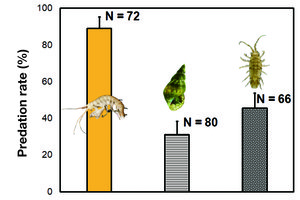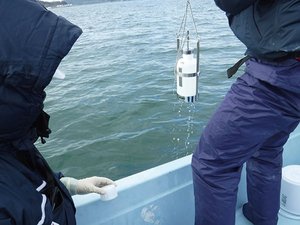Major Research Development of the methods for increasing ecosystem functions in eelgrass meadow
Port development and operations often entail nature conservation measures, including the development of artificial shallow areas and seagrass meadows. However, as the functions of seagrass meadows widely vary by location and time, it is not easy to evaluate how their functions would manifest and what they signify in terms of humans' attempts to protect the environment.
In this study, which focuses on the function of seagrass meadows as feeding grounds for fishes, etc., we conducted a large-scale on-site experiment and revealed that amphipods and other crustaceans would be good prey for fishes, etc. Furthermore, we developed a low-cost research method for monitoring the functions of seagrass meadows using environmental DNA metabarcoding. These findings indicate that such artificial development of seagrass meadows, which provide stable
habitats for gammaridean amphipods and other crustaceans, might allow those seagrass meadows to serve as viable feeding grounds for fishes, etc. We have also identified a practical method of monitoring their functions.


Useful findings for improving the function of seagrass meadows
(Left) Result of on-site experiment in seagrass meadows
(Right) Research method utilizing environmental DNA



